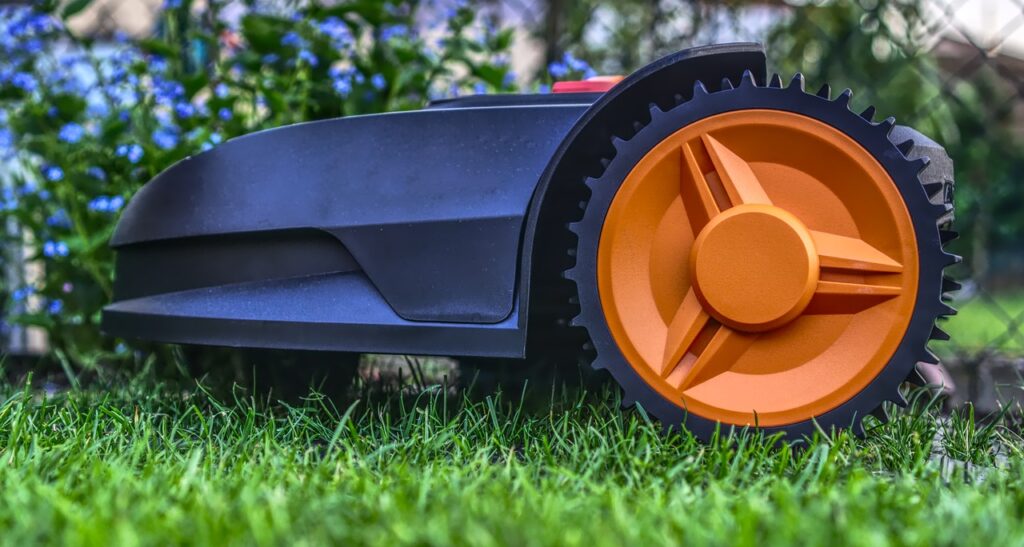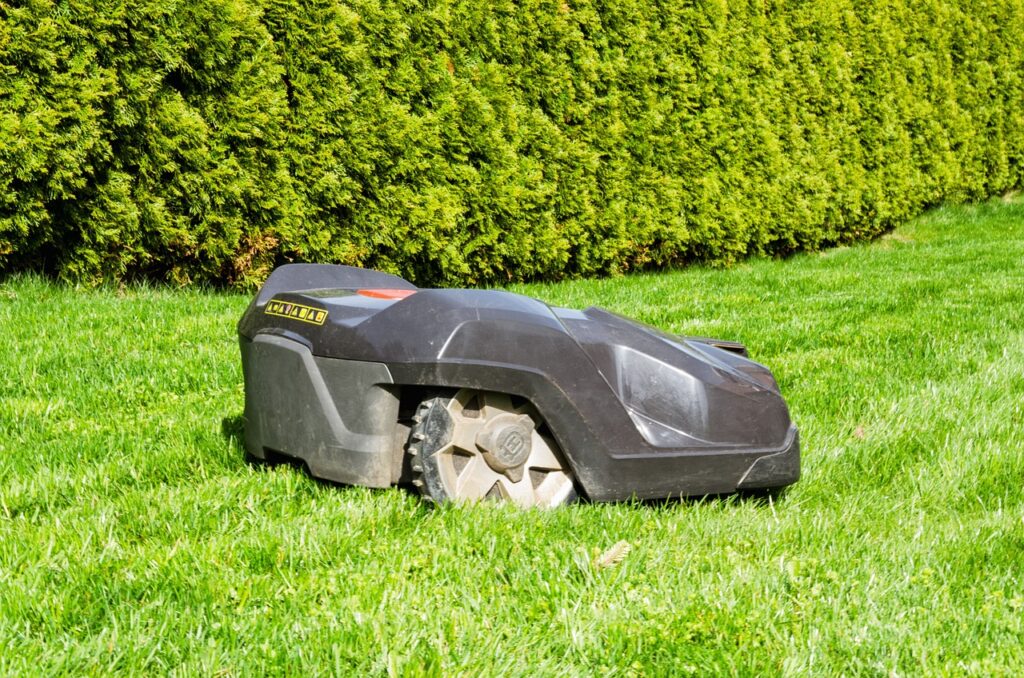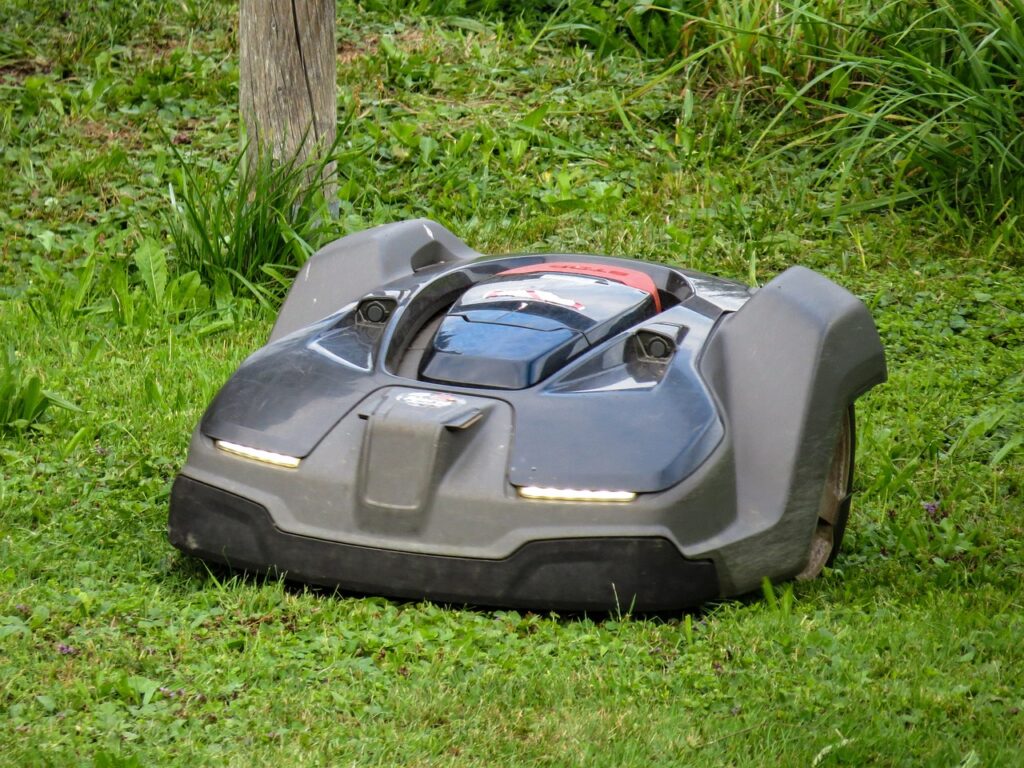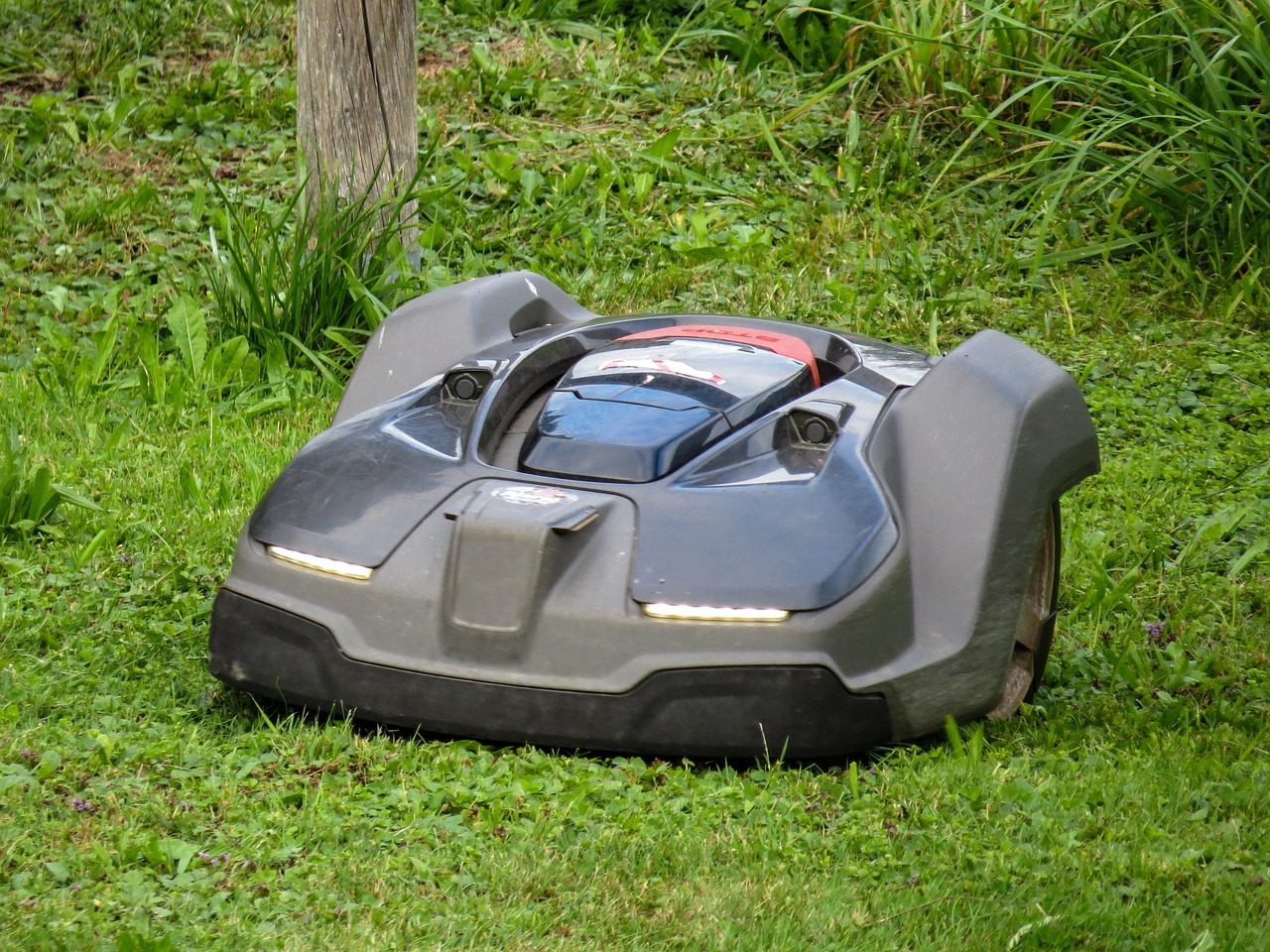In the quest for the perfect lawn maintenance solution, we find ourselves torn between two options: the remote-controlled mower and the robotic lawn mower. Each promises to save us time and effort in keeping our lawns pristine, but which one is truly the better choice? In this article, we will compare the pros and cons of both options, taking into consideration factors such as convenience, efficiency, and cost. So sit back, relax, and let us guide you through the world of remote-controlled and robotic lawn mowers to help you make an informed decision for your lawn care needs.


Our #1 Recommendation: Segway Navimow i105N Robot Lawn Mower Perimeter Wire Free 1/8 Acre RTK+Vision Robotic Lawnmower, AI-Assisted Mapping, Virtual Boundary, APP Control, 58dB(A) Quiet, Multi-Zone Management
Check Latest Price on AmazonAdvantages of Remote-Controlled Mowers
Enhanced control and maneuverability
One of the key advantages of remote-controlled mowers is the enhanced control and maneuverability they offer. With a remote-controlled mower, we have complete control over the direction and speed of the mower, allowing us to effectively navigate around obstacles and tight spaces. This level of control ensures that we can precisely mow every inch of our lawn, even in hard-to-reach areas.
Ability to navigate obstacles
Remote-controlled mowers are designed to easily navigate around obstacles in our lawn. Whether it’s a tree, a flower bed, or a patio, these mowers have the agility to maneuver around them without causing any damage. This allows us to maintain a neatly manicured lawn without having to manually move any obstacles out of the way.
Ideal for uneven terrains
If our lawn has uneven terrains, such as slopes or uneven ground, a remote-controlled mower can be a great option. These mowers are often equipped with features like adjustable cutting heights and sturdy tires, which enable them to effectively mow on uneven surfaces. With a remote-controlled mower, we can ensure that our lawn looks well-manicured, regardless of its topography.
Suitable for larger lawns
For those with larger lawns, a remote-controlled mower can be a practical choice. These mowers typically have a larger cutting width and longer battery life compared to robotic mowers, allowing us to finish mowing our lawn in a shorter amount of time. Additionally, the ability to control the mower remotely means we don’t have to physically exert ourselves by pushing a heavy mower across a large area.
Disadvantages of Remote-Controlled Mowers
Limited range and mobility
One of the downsides of remote-controlled mowers is their limited range and mobility. Since we need to stay within a certain range to operate the mower, we may not be able to access every corner of our lawn. This can be problematic, especially if we have a large or irregularly shaped lawn. Additionally, the limited mobility can make it difficult to maneuver around obstacles that are located far away from us.
Requires constant manual operation
Another disadvantage of remote-controlled mowers is that they require constant manual operation. Unlike robotic mowers that can operate autonomously, remote-controlled mowers need someone to be present and actively control the mower throughout the entire mowing process. This can be time-consuming and may not be convenient for individuals with busy schedules or other responsibilities.
Potential safety hazards
Using a remote-controlled mower also poses potential safety hazards. Since we are operating the mower remotely, there is a risk of losing control or accidentally running the mower into an unintended direction. This can lead to accidents or damage to property. Additionally, the presence of a remote-controlled mower in the hands of children or inexperienced individuals can result in unsafe situations. It’s important to always exercise caution and follow safety guidelines when operating a remote-controlled mower.
Check Out Affordable RC Mowers On Sale!

Our #1 Recommendation: Segway Navimow i105N Robot Lawn Mower Perimeter Wire Free 1/8 Acre RTK+Vision Robotic Lawnmower, AI-Assisted Mapping, Virtual Boundary, APP Control, 58dB(A) Quiet, Multi-Zone Management
Check Latest Price on AmazonAdvantages of Robotic Lawn Mowers
Autonomous operation
One of the key advantages of robotic lawn mowers is their ability to operate autonomously. Once set up, these mowers can navigate and mow our lawn without any direct human intervention. This means that we can set the mower to operate at specific times or even when we’re away from home, allowing us to enjoy our lawn without having to manually mow it ourselves.
Time-saving and convenience
Robotic lawn mowers offer a significant advantage in terms of time-saving and convenience. With these mowers, we no longer need to spend hours pushing and controlling a mower. Instead, we can simply set up the robotic mower and let it do the work for us. This frees up our time to focus on other tasks or simply relax and enjoy our outdoor space.
Efficient and consistent cutting
Robotic mowers are known for their efficient and consistent cutting performance. These mowers typically utilize advanced cutting systems and sensors that allow them to precisely mow the grass, ensuring a uniform and well-groomed lawn. The ability of robotic mowers to continuously mow also promotes healthy grass growth by regularly trimming the grass to an optimal height.
Environmentally friendly
Another advantage of robotic mowers is their environmental friendliness. These mowers are usually electrically powered, eliminating the need for fossil fuels and reducing greenhouse gas emissions. Additionally, their autonomous operation allows them to utilize energy more efficiently by mowing small sections at a time, as needed. This results in reduced energy consumption and a smaller carbon footprint compared to traditional mowers.
Disadvantages of Robotic Lawn Mowers
Higher initial cost
One of the main disadvantages of robotic mowers is their higher initial cost compared to traditional mowers. Robotic mowers are often more expensive to purchase upfront, primarily due to their advanced technology and autonomous capabilities. However, it’s important to consider the long-term benefits and potential savings in time and effort that robotic mowers can provide.
Limited cutting height options
Robotic mowers may have limitations when it comes to cutting height options. While they generally offer adjustable cutting heights, the range of available options may be more limited compared to traditional mowers. This can be a drawback for those who prefer specific cutting heights for their lawn.
Potential for theft or damage
Since robotic mowers are generally left unattended while operating autonomously, there is a potential risk for theft or damage. These mowers are valuable and portable, making them attractive targets for theft. Additionally, there is a possibility of accidental damage caused by external factors, such as vandalism or extreme weather conditions. It’s important to consider security measures and insurance options to mitigate these risks.
Dependency on weather conditions
Robotic mowers may also have some level of dependency on weather conditions. Heavy rain, high humidity, or extreme heat can affect the performance and operation of these mowers. While they are typically designed to withstand various weather conditions, it’s important to ensure that the mower is suitable for the specific climate and environmental conditions in which it will be used.

Our #1 Recommendation: Segway Navimow i105N Robot Lawn Mower Perimeter Wire Free 1/8 Acre RTK+Vision Robotic Lawnmower, AI-Assisted Mapping, Virtual Boundary, APP Control, 58dB(A) Quiet, Multi-Zone Management
Check Latest Price on Amazon
Factors to Consider when Choosing Between Remote-Controlled and Robotic Lawn Mowers
Lawn size and complexity
The size and complexity of our lawn play a significant role in determining the suitability of each mower type. If we have a large and complex lawn with many obstacles, a remote-controlled mower may provide more control and flexibility. On the other hand, for smaller and less complex lawns, a robotic mower can offer convenience and autonomy.
Ease of use and maintenance
Consider how easy each mower type is to use and maintain. Remote-controlled mowers require active control and manual operation, which may require more effort on our part. Robotic mowers, on the other hand, offer a more hands-off approach with automated operation. Additionally, robotic mowers often have self-charging and self-cleaning features, reducing the maintenance required.
Budget and affordability
Our budget and affordability are important factors to consider. Remote-controlled mowers tend to be more affordable upfront, while robotic mowers may have a higher initial cost. However, it’s important to also consider long-term savings in terms of time and effort that can be gained from using a robotic mower.
Personal preferences and requirements
Ultimately, our personal preferences and specific requirements should guide our decision. Consider factors such as our comfort level with technology, the level of control we desire, and any specific features or functionalities that are important to us. It’s important to choose a mower that aligns with our individual needs and preferences.
Comparison of Remote-Controlled and Robotic Lawn Mowers
Control and operation
Remote-controlled mowers offer direct control and operate based on our inputs. We have the flexibility to control the mower’s direction, speed, and cutting patterns. Robotic mowers, on the other hand, operate autonomously and follow pre-programmed instructions. They generally have sensors and navigation systems to ensure efficient operation.
Navigation and obstacle detection
Remote-controlled mowers rely on our ability to navigate and detect obstacles visually. We need to actively steer the mower to avoid obstacles and ensure efficient mowing. Robotic mowers, on the other hand, utilize sensors and intelligent navigation systems to detect and navigate around obstacles. They can often map our lawn and adapt their mowing patterns based on the environment.
Cutting performance and quality
Both remote-controlled and robotic mowers are designed to provide efficient cutting performance. Remote-controlled mowers offer precise control, allowing us to ensure a consistent cutting height and quality. Robotic mowers utilize advanced cutting systems and sensors to provide efficient and consistent cutting across the entire lawn. However, the cutting performance and quality may vary based on the specific model and features of each mower.
Power source and battery life
Remote-controlled mowers are typically powered by gasoline or electricity, depending on the model. They often have a longer battery life compared to robotic mowers, allowing for extended operation. Robotic mowers are usually electrically powered and come with rechargeable batteries. While they may have a shorter battery life, they can recharge themselves when needed.
Maintenance requirements
Both remote-controlled and robotic mowers require regular maintenance. Remote-controlled mowers require maintenance similar to traditional mowers, including blade sharpening, oil changes, and spark plug checks. Robotic mowers often have self-cleaning features and require less frequent blade sharpening, but still need occasional cleaning and maintenance of their sensors and cutting system.

Examples of Remote-Controlled Mowers
Brand A Model XYZ
Brand A offers the Model XYZ remote-controlled mower, which boasts a powerful engine and a wide cutting width. It is equipped with advanced navigation features, allowing for efficient mowing even in complex lawns. The remote control provides precise control and maneuverability, making it an excellent choice for those who value control and flexibility.
Brand B Model ABC
Brand B’s Model ABC remote-controlled mower is known for its durability and reliability. It features a rugged design, ideal for various terrains and obstacles. The remote control offers intuitive operation, making it easy to navigate around tight spaces and objects. This model is a popular choice for those with large lawns and a need for enhanced control.
Brand C Model PQR
Brand C’s Model PQR remote-controlled mower stands out for its user-friendly features and versatile functionality. It offers adjustable cutting heights and a wide range of speed options, allowing for customization based on personal preferences. The remote control has a long range, ensuring that no corner of the lawn is left unattended.
Examples of Robotic Lawn Mowers
Brand X Model 123
Brand X’s Model 123 is a highly advanced robotic mower that offers exceptional autonomy and cutting performance. It features intelligent navigation and obstacle detection, ensuring efficient and safe operation. This model can be programmed to mow at specific times, allowing for complete hands-off operation. It is particularly suitable for those looking for a convenient and time-saving solution.
Brand Y Model 456
Brand Y’s Model 456 robotic mower is known for its cutting-edge technology and superior cutting quality. It utilizes a powerful cutting system that delivers precise and consistent results. This model also offers customizable cutting schedules and is equipped with sensors that detect changes in grass growth, ensuring that the grass is always at the optimal height.
Brand Z Model 789
Brand Z’s Model 789 is a reliable and efficient robotic mower that is designed to handle larger lawns. It features a long battery life and a wide cutting width, allowing for efficient mowing of bigger areas. This model also offers advanced GPS navigation, ensuring accurate mapping and navigation of the lawn. It is an excellent choice for those with extensive outdoor spaces.
Conclusion
Choosing between remote-controlled mowers and robotic lawn mowers ultimately depends on our individual needs and preferences. Remote-controlled mowers provide enhanced control and maneuverability, making them suitable for larger lawns with obstacles or uneven terrains. Robotic mowers offer autonomous operation, time-saving convenience, and environmentally friendly performance. Evaluating factors such as our lawn size, ease of use, budget, and personal preferences can help us make an informed decision. Whether we opt for a remote-controlled or robotic mower, the ultimate goal is to have a well-maintained, beautiful lawn with minimal effort and maximum enjoyment.
Check Out Top Budget RC Mowers!


